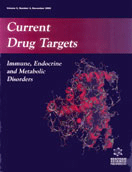Abstract
Graves disease is the most common form of hyperthyroidism in childhood. Current treatment options include antithyroid medications, surgery, and radioactive iodine. Medical therapy is generally associated with long term remission rates of less than 25% and a small risk of serious adverse reactions that include hepatic failure and bone marrow suppression. Total thyroidectomy is associated with very high cure rates and a small risk of hypoparathyroidism and recurrent laryngeal nerve damage. When radioactive iodine is used at appropriate doses, there is a very high cure rate without increased risks of thyroid cancer or genetic damage. Because of the theoretical risk of thyroid cancer after thyroid irradiation in individuals less than 20 years of age, relatively high doses of radioactive iodine should be administered to minimize the persistence of residual thyroid tissue. “After 36 years of observation, it seems clear now that this noninvasive form of treatment [radioactive iodine] is safer and more effective than any present method of managing the patient with moderate or severe hyperthyroidism”. Earle M. Chapman [1].
 3
3


















